Historical Library News
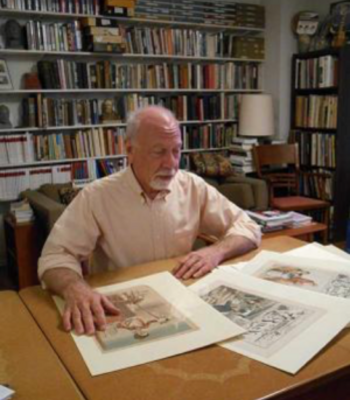
May 3, 2021
Explore The Bert Hansen Collection of Medicine and Public Health in Popular Graphic Art which includes over 1200 images and items produced between 1850 and 2010 with additional reference materials. The collection is a gift of historian Bert Hansen, Ph.D., whose goal was to document the visual record of medical practice and research and public health in America. This video was produced by the Consortium for the History of Science, Technology and Medicine, of which Yale is a member. View the Bert Hansen Study Guide for additional information. Over a period of thirty years, Hansen selected... Read More
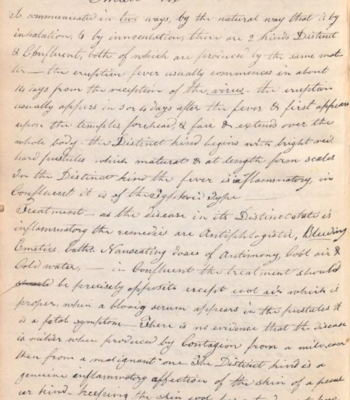
Mar 19, 2021
The Cushing/Whitney Medical Library is pleased to announce that volumes from our manuscript collection, focused on medical education, are now available online! The effort to digitize these volumes and make them freely available worldwide was generously funded by the Arcadia Fund. The Historical Library holds a collection of volumes handwritten between the sixteenth and early nineteenth centuries documenting medical education in multiple ways. Student notes of medical lectures show transmission of knowledge by notable medical men such as William Hunter (1718-1783), physician and man-midwife... Read More
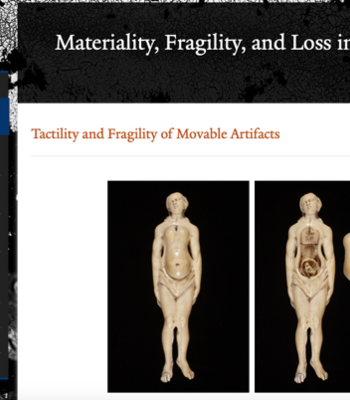
Feb 3, 2021
The Historical Library is pleased to announce a new online exhibition showing items you might never find in our physical exhibits! https://onlineexhibits.library.yale.edu/s/materialfragility/page/home “Materiality, Fragility, and Loss in the Medical Archive” was curated by Anabelle Gambert-Jouan, a doctoral candidate in the Department of the History of Art, who was supported by a Graduate Professional Experience Fellowship from the Graduate School of Arts and Sciences. She reflects on the exhibition in this blog post. Overcoming the Fragility of Objects with a Digital Exhibition by Anabelle... Read More
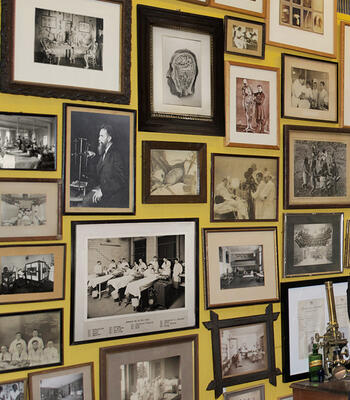
Dec 2, 2020
Written by Patricia Carey | First published on YaleNews In one image, a physician injects a Civil War veteran with morphine, a common practice that led to widespread addiction after the war. In another, a gold-framed daguerreotype from 1847, an unconscious patient sprawls on a white-draped table, surrounded by men in frockcoats and cravats, documenting one of the earliest uses of ether in operation. Then there’s the haunting postmortem photograph of a 22-year-old physician who died caring for patients in an 1849 cholera outbreak — a poignant reminder of the risks medical professionals are... Read More
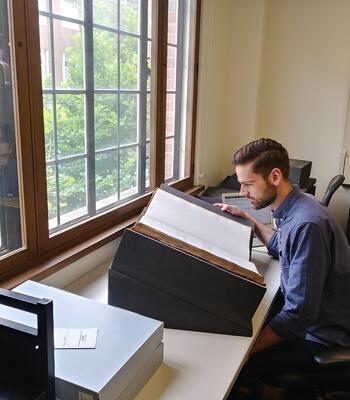
Dec 1, 2020
Written by Jonathan S. Jones The U.S. Civil War (1861-65) sparked a massive epidemic of opioid addiction among those who fought and survived the bloody conflict. The war mobilized millions of soldiers, hospital workers, and freedom-seekers, bringing people into contact with unfamiliar microbes, insects, and animals. This mass movement of bodies and pathogens resulted in extreme outbreaks of measles, smallpox, typhoid fever, and other deadly, terrifying diseases. Brutal technological innovations like the Minié ball caused ghastly, agonizing wounds, and men who survived often spent the rest of... Read More
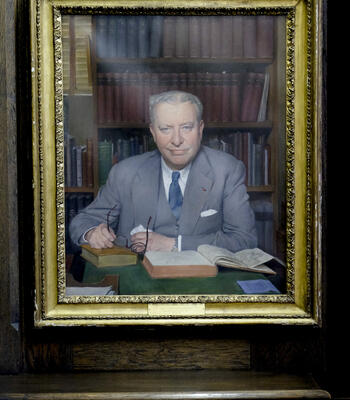
Sep 14, 2020
While Harvey Cushing was the impetus behind the formation of Yale’s Medical Library, you can find materials on the other founders, John Fulton and Arnold Klebs, within the Historical Library’s main reading room. John Fulton, the youngest of the three founders of the Historical Library, trained in medicine and physiology at Harvard and Oxford, and came to Yale in 1930 as professor of physiology. He was already deep into collecting books when he served as a resident and disciple of Harvey Cushing at the Peter Bent Brigham Hospital. The two men shared a close friendship based on both... Read More

Jun 1, 2020
Written by Alicia Petersen, PhD student, History of Science and Medicine Program (HSHM) Herbaria, collections of dried plant specimens that were (usually) adhered to sheets of paper, were very popular in 18th-century Europe. From professional botanists exploring the Americas to amateur scientists roaming the fields near their homes, many used herbaria to store preserved plants for later study. In order to better understand how early moderns “did” science, I decided to create my own herbarium (see the page below) following the guidelines for plant collection and preservation detailed in 18th-... Read More
Mar 4, 2020
Thirty years ago, the landmark Americans with Disabilities Act (ADA) became law, prohibiting discrimination against people with disabilities in all areas of public life, including employment, schools, transportation, and public spaces. This exhibition explores disability and disability activism leading up to the passage of the ADA in July 1990. At a local level, the exhibition discusses disability activism at Yale today, focusing on multiple groups advocating for change across Yale's system. On display in the Cushing Rotunda March 5th - December 2020